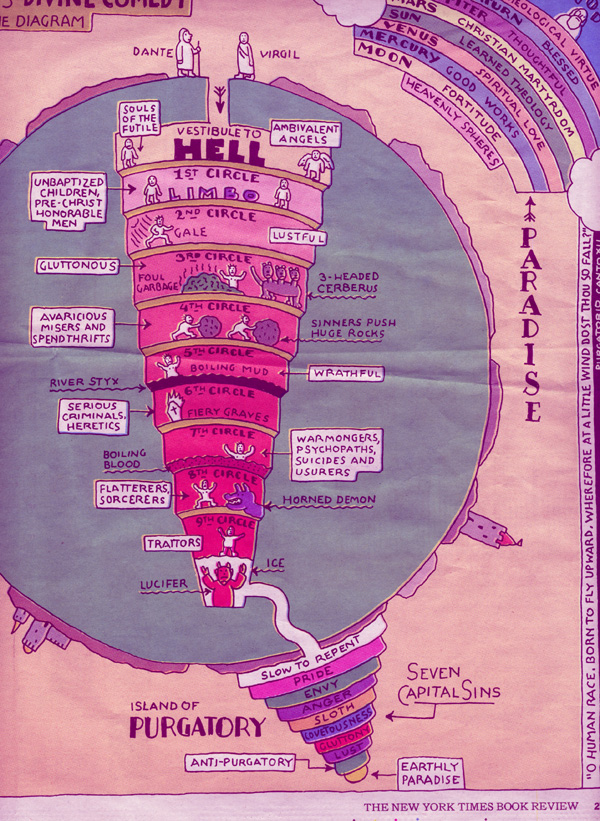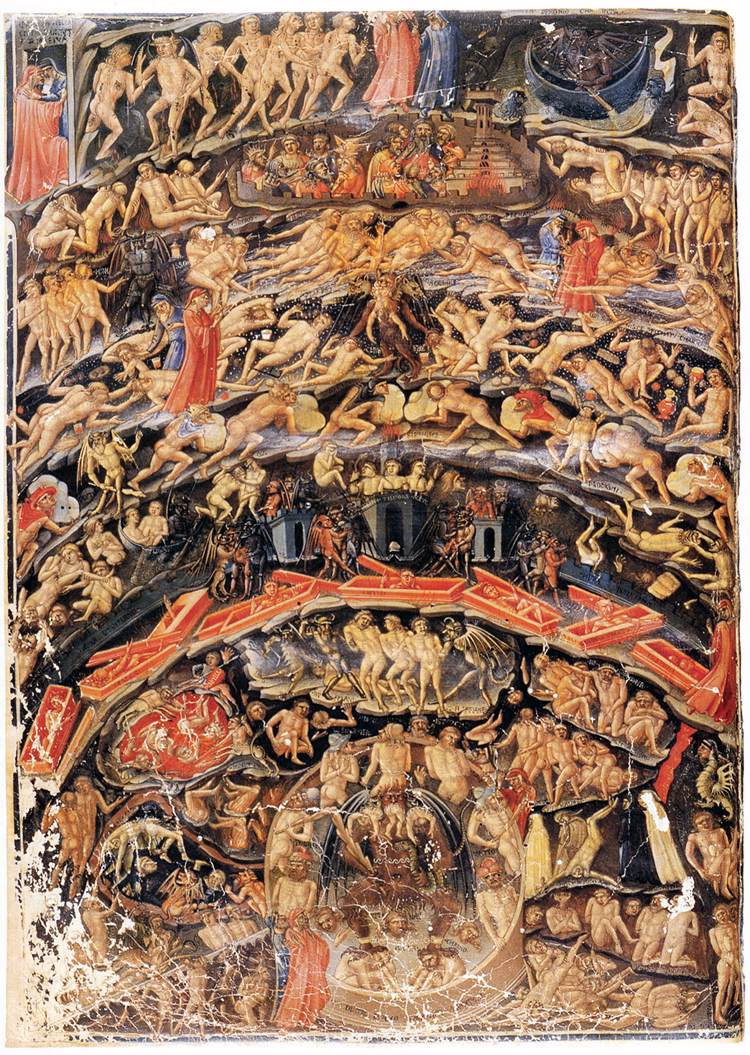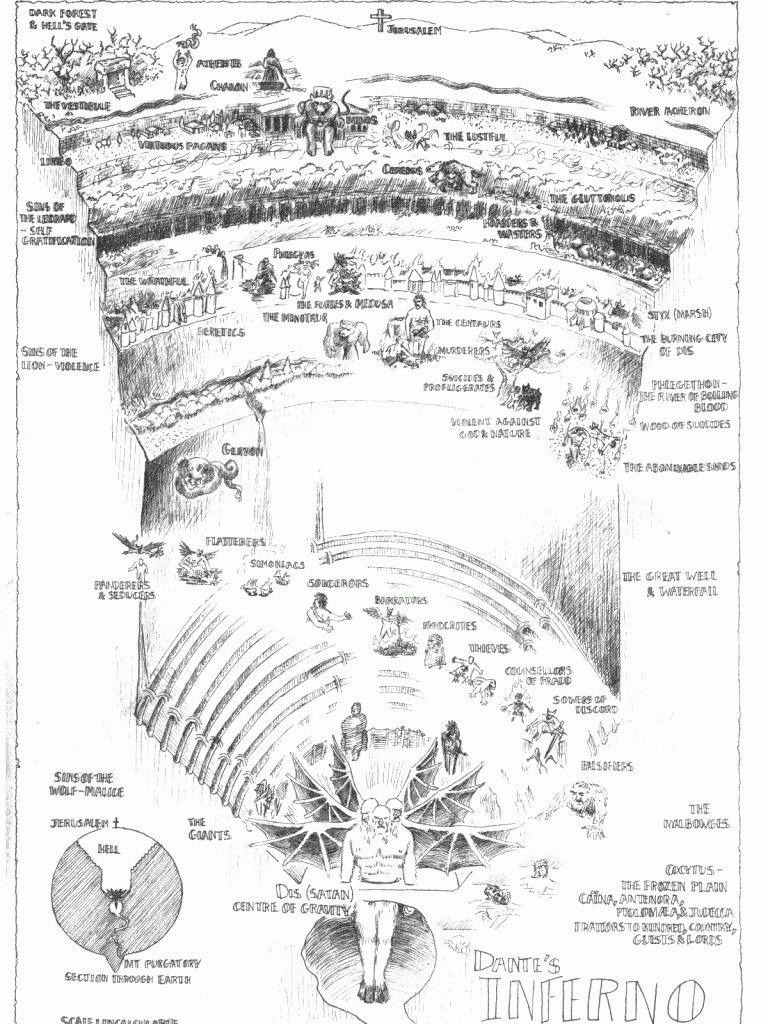I’m always surprised that there haven’t been vastly more attempts to capture, in a single image, the architectural entirety of Dante’s Hell, if not the other two regions. (You can see which one dominates in the above picture.) Hell is by far the most sensible (sensory, that is), visceral realm, as Anne Stevenson so well put it:
In the Museum of Floating Bodies and Flammable Souls
Painters who painted the flights of martyrs for money,
Who filled the drapery of angels with rose-tinted oil,
Had to please rich patrons with trapeze acts of the body,
Since no one can paint the electricity of the soul.My lady in her blue silk cowl must by now be topsoil;
She swans into Heaven, almond eyes uplifted in piety.
My lord kneels at prayer in a cassock, blade at his heel.
Not a single electron remains of his sin or sanctity.While in Hell, for example in the water church of Torcello,
The wicked receive their desserts. Disembowelled and dismembered,
They are set upon eternally, yet their bodies alone are touched;
Unless souls, flushed out of the flesh, are the flames that torch them.No wonder evil’s so interesting and goodness so pitifully dull.
Torture of the body symbolizes torture of the mind;
And burning in the bonfires of conscience is hardly confined
To hell for bad Italians, who, being damned, are being saved as well.
I suppose the thing is just too massive, encompassing an entire cosmos, as Erich Auerbach said in his book on Dante. Botticelli certainly did brilliantly on the massive front, but I have an affection for the more human-scale version by Bartolomeo, which replaces the vastness with claustrophobia:
The Driftless Area Review recently posted a set of Infernal images in The Landscape of Hell, including this lovely version of Dante’s:


